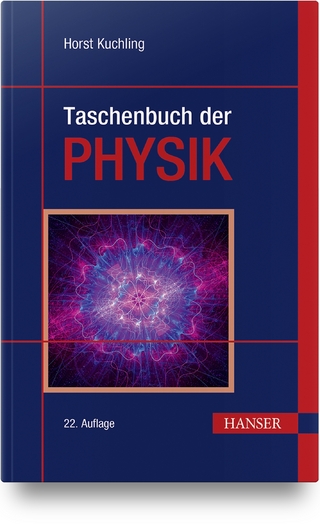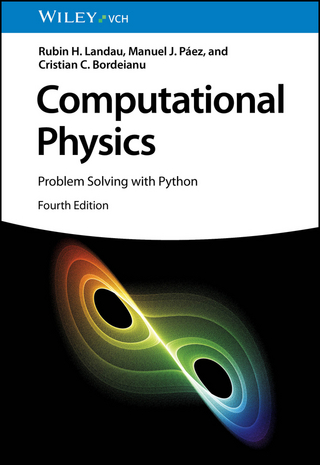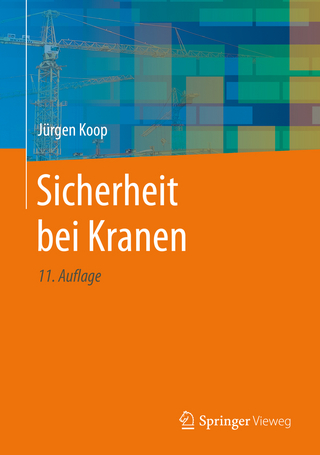
Magnetic Field Measurement with Applications to Modern Power Grids
Wiley-IEEE Press (Verlag)
978-1-119-49451-5 (ISBN)
Magnetic Field Measurement with Applications to Modern Power Grids offers an authoritative review of the development of magnetic field measurement and the application of the technology to the smart grid. The authors, noted experts in the field, present the challenges to the field of magnetics and explore the use of cutting-edge magnetic technology in the development of the smart grid. In addition, the authors discussed the applications of magnetic field measurements in substations, generations systems, transmission systems and distribution systems. The specialized applications of magnetic field measurements in these venues are explored including the typical sensors used, the field strength levels and spectral frequencies involved and the mathematics that are needed to process data measurements.
The book presents the complex topic of electromagnetics in clear and understandable terms. Magnetic Field Measurement with Applications to Modern Power Grids offers researchers in the magnetic community a guide to the progress of the smart grid and helps to inspire innovation of magnetic technologies in the smart grid. The technologies of measurement are a bridge between mathematical models and application oriented practice. The book is a guide to that bridge and:
Offers a comprehensive review of the development of magnetic field measurement
Shows how magnetic field measurement applies to the smart grid
Outlines the challenges, trends and needs for future magnetic measurement systems
Includes information on the need for levels of standardisation, smart grid applications and innovative sensors
Written for researchers in smart grid, power engineers, power grid companies and professionals in the measurement and test industries, Magnetic Field Measurement with Applications to Modern Power Grids is an authoritative guide that offers a clear understanding of the relationship between the magnetic field measurement and power grids.
QI HUANG, PHD, is a Professor with the School of Mechanical and Electrical Engineering, University of Electronic Science and Technology of China (UESTC) and Director, Key Lab of Power System Wide Area Measurement and Control, Sichuan Province, P.R. China. ARSALAN HABIB KHAWAJA, PHD, is an Assistant Professor with the U.S.-Pakistan Center for Advanced Studies in Energy (USPCASE), National University of Sciences and Technology (NUST), Pakistan. YAFENG CHEN is with the School of Mechanical and Electrical Engineering, University of Electronic Science and Technology of China (UESTC), P.R. China. JIAN LI is Associate Professor at the School of Mechanical and Electrical Engineering, University of Electronic Science and Technology of China (UESTC), P.R. China.
Foreword xi
Preface xv
Acknowledgments xvii
1 Introduction 1
1.1 Magnetism and Magnetic Fields: A Historical View 1
1.1.1 A Historical View of Magnetism 1
1.1.2 Magnetic Field 4
1.1.3 The Mathematics of Magnetism 5
1.1.4 Magnetism in Daily Life 7
1.1.5 Magnetic Fields in Industry 9
1.2 Magnetic Fields in Modern Power Systems 10
1.2.1 Components of Modern Power Systems 10
1.2.2 Magnetic Field Detection and Interpretation 15
1.3 Magnetics in Smart Grids 19
1.3.1 Magnetic Field in Lieu of Smart Grid Objectives 19
1.3.2 Magnetic Field Measurements for Innovative Applications 22
Bibliography 22
2 State of the Art Magnetoresistance Based Magnetic Field Measurement Technologies 25
2.1 Introduction 25
2.2 Progress in MR Sensing Technologies 25
2.2.1 AMR Sensors 26
2.2.2 GMR Sensors 29
2.2.3 TMR Sensors 32
2.2.4 CMR Sensors 34
2.3 Limitations of MR Effect Based Sensors 35
2.3.1 Noise Performance 36
2.3.2 Noise Shielding and PreventiveMeasures 39
2.3.3 Cross-axis Noise 41
2.4 Sensor Circuitry Design and Signal Processing 42
2.4.1 AMR: Set/reset Pulse 43
2.4.2 GMR: Temperature Compensation and Unipolar Output 46
2.4.3 TMR: Higher Noise Level at Low Frequencies 48
2.5 Overview of Established Magnetic Field Sensing Technologies 49
Bibliography 50
3 Magnetic Field Measurement for Power Transmission Systems 53
3.1 Introduction 53
3.2 Electric Current Reconstruction 55
3.2.1 Reconstruction with Stochastic Optimization Techniques 55
3.2.2 Reconstruction with Optimal Placement of Minimum Sensing Nodes 61
3.3 Monitoring of Operation Parameters of Power Transmission Lines 79
3.3.1 Conductor Elongation and Motion 79
3.3.2 Detection and Estimation 82
3.4 Spatial Monitoring of HVTLs in Real-world Scenarios 89
3.4.1 Mathematic Model of HVTLs in Real-world Scenarios 89
3.4.2 MF of HVTLs in Motion for Real-world Scenarios 95
3.4.3 MF of Conductors for Random Bi-directional Motion 97
3.4.4 A Unified Algorithm for Sag and Conductor Motion Detection 100
3.4.5 Validation of the Proposed Approach 102
3.4.6 Noise Tolerance and Uncertainty Analysis 106
3.5 Unified Current Reconstruction and Operation Parameters of HVTLs 109
3.6 Fault Location in Overhead HVTLs 119
3.6.1 Types of Short-circuit Faults 119
3.6.2 Fault Detection with Magnetic Sensors 121
Bibliography 140
4 Magnetic Field Measurement for Modern Substations 143
4.1 Introduction to GIS-based Substations 143
4.1.1 Smart Substations 143
4.1.2 Gas-insulated Switchgear 144
4.1.3 GIS-based Substations 145
4.2 MR-based Electronic Current Transformers 146
4.2.1 Experimental Research on Hysteresis Effects in MR Sensors 147
4.2.2 MR Sensors with Magnetic Shielding 159
4.3 Broadband Magnetic Field Characterization 170
4.3.1 Transient Magnetic Field Events 170
4.3.2 Evaluation of TMF Event Impact on Electronic Equipment 171
4.4 Broadband Point Measurement of the TMF in Substations with MR Sensors 173
4.4.1 Effect of sensor size 173
4.4.2 Design of a Point Measurement System 175
4.4.3 Laboratory Testing of the Measurement System 176
4.4.4 Onsite Testing 179
4.5 Noise and External Field Protection 180
4.5.1 MR Sensor Array Based Interference-rejecting Current Measurement Method 183
4.5.2 Adaptive Filter Algorithm Based Current Measurement 194
4.5.3 Current Measurement Under Strong Interference 202
Bibliography 214
5 Magnetic Field Measurement for Power Distribution Systems 219
5.1 Introduction 219
5.2 Magnetic Field Measurement Based Non-invasive Detection 220
5.3 Magnetic Sensors for HEMSs 223
5.3.1 Magnetic Sensors Enable Non-intrusive Monitoring for HEMSs 224
5.3.2 Detection Method for Edge Identification 226
5.3.3 Discussion 241
5.4 Magnetic Field Measurement Based Fault Location and Identification 242
5.4.1 Introduction 242
5.4.2 MR Based Non-invasive Identification Technique 243
5.4.3 Distributed Sensor Network Based Fault Location and Identification 245
5.5 Magnetic Sensors for Survey of EMF Exposure 247
5.5.1 Magnetic Fields and Health 247
5.5.2 Magnetic Environment Monitoring Systems 249
5.5.3 Selection of Sensors 251
5.5.4 System Design 252
5.6 Collection of Energy Big Data 255
5.6.1 Concept of Big Data 255
5.6.2 Energy Big Data 257
5.6.3 Non-invasive Collection of Energy Big Data 259
Bibliography 260
6 Innovative Magnetic Field Measurement for Power Generation Systems 265
6.1 Introduction 265
6.2 Condition Monitoring of Synchronous Machines 266
6.2.1 Introduction 266
6.2.2 Speed Monitoring 267
6.2.3 Vibration Monitoring 268
6.2.4 Crack Detection 270
6.2.5 Electrical Machine Signature Identification 270
6.2.6 Magnetic Field Measurement for Condition Monitoring of Synchronous Generators 271
6.3 Magnetic Field and Renewable Energy 272
6.3.1 Commonly Used Renewable Energy Sources 273
6.3.2 Potential Applications 274
6.3.3 Challenges 279
Bibliography 280
7 Future Vision 285
7.1 Magnetic Field Based Instrumentation and Measurement in Smart Grids 285
7.1.1 Transmission Systems 285
7.1.2 Distribution Systems 286
7.1.3 Generation Systems 287
7.2 Integration with Existing Power Systems 288
7.2.1 Chances 289
7.2.2 Challenges 290
7.3 Future Development 291
7.3.1 Performances 292
7.3.2 Standardization 292
7.3.3 Applications 293
Bibliography 294
Index 295
| Erscheinungsdatum | 14.10.2019 |
|---|---|
| Reihe/Serie | IEEE Press |
| Sprache | englisch |
| Maße | 170 x 244 mm |
| Gewicht | 635 g |
| Themenwelt | Naturwissenschaften ► Physik / Astronomie |
| Technik ► Elektrotechnik / Energietechnik | |
| ISBN-10 | 1-119-49451-6 / 1119494516 |
| ISBN-13 | 978-1-119-49451-5 / 9781119494515 |
| Zustand | Neuware |
| Informationen gemäß Produktsicherheitsverordnung (GPSR) | |
| Haben Sie eine Frage zum Produkt? |
aus dem Bereich


